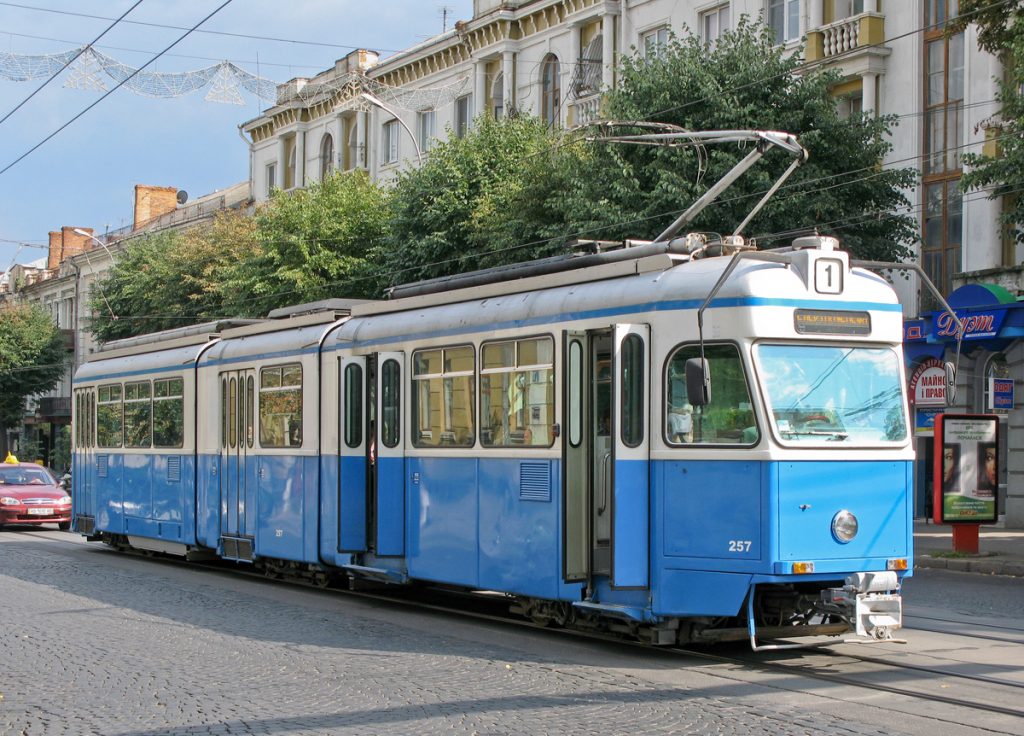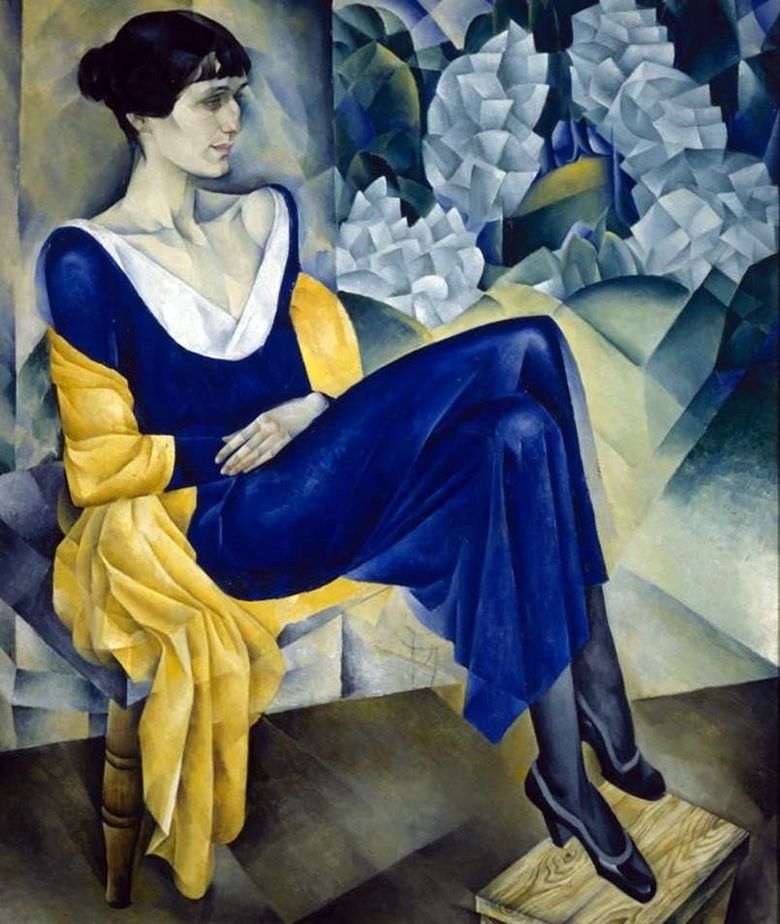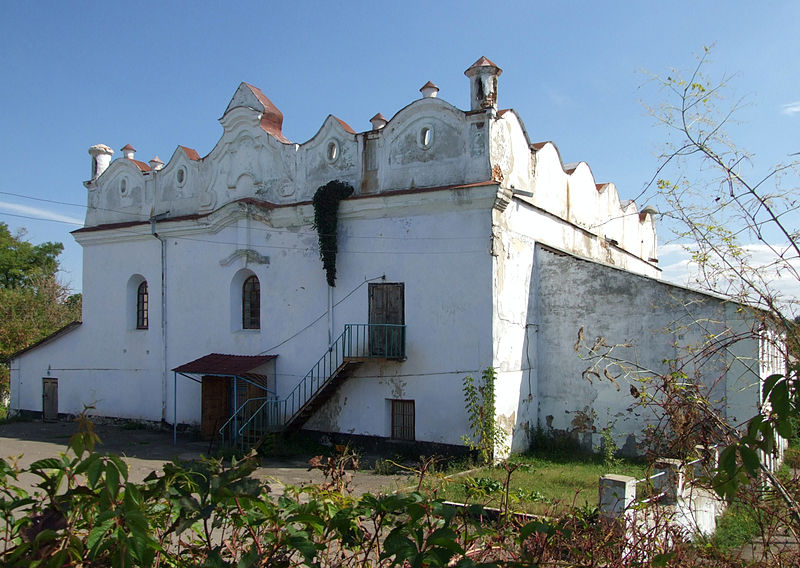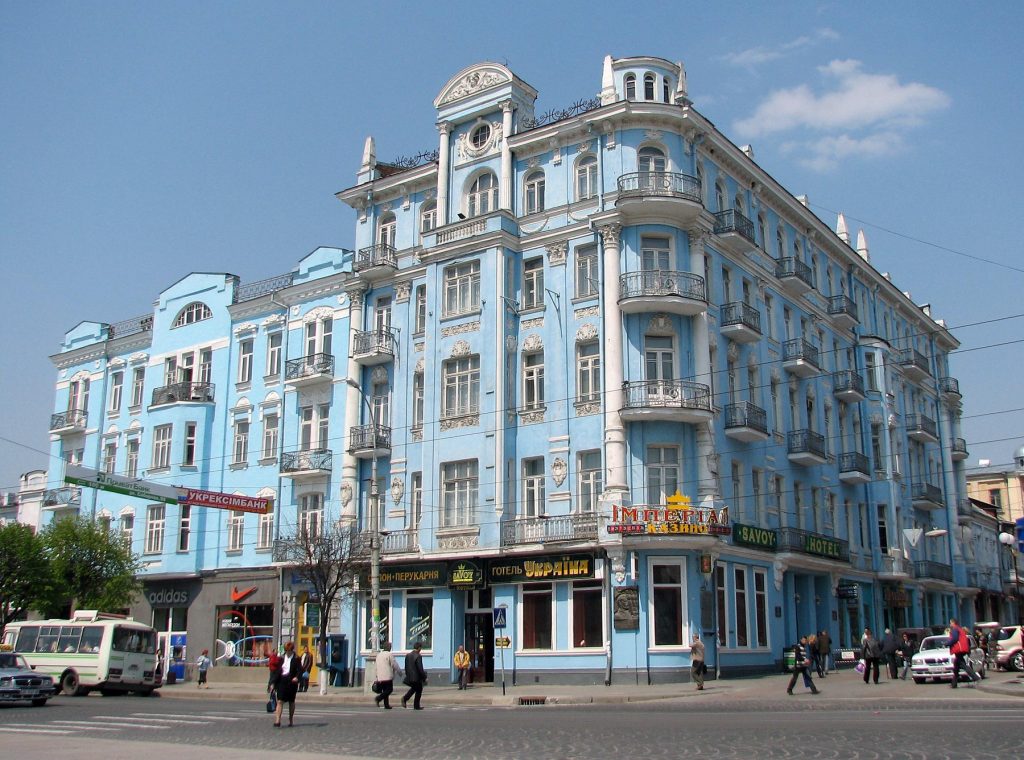
The terrifying war against Ukraine changes, of course, the function of these pages devoted to the Jewish cultural heritage of that country. Many of the places mentioned were razed to the ground by bombs. While these pages are not intended in the present time for tourism, they may be useful to researchers and students as historical references. References to so many painful histories during the pogroms and the Shoah, but also to the glorious history of Ukrainian Judaism, in its cultural, religious and Zionist dimensions. Wishing the Ukrainian people a speedy end to these atrocities of which they are victims.
Located in Podolia, equidistant from Kiev and Odessa, Vinnytsa is a city of cobbled streets, elegant avenues and numerous gardens, still very marked by its Polish past.

Its foundation dates back to the 14th century, when Podolia entered the Grand Duchy of Lithuania. Integrated into the Republic of Poland-Lithuania at the end of the 16th century, it was then the capital of the province of Braslav – fundamental in the history of European Hasidism – and a major commercial, artistic and cultural center.
In 1793, following the second partition of the Republic of Poland, Vinnitsa was integrated into the Russian Empire and became the administrative capital of the region of Podolia, then bordering Poland. This proximity explains the very MittelEuropa atmosphere that you will feel in the city, even though Vinnytsia will remain under the authority of the Czars and then the Soviets until 1991. To get to Vinnytsia from Kiev or Odessa if you are not already in Podolia, the simplest and most comfortable is the train: allow around 4 hours and around ten euros, several departures per day.
Development of Jewish culture
The first traces of Jewish presence in Vinnytsa date back to the 16th century. The Jewish population of the city, massacred for the first time in 1698 during the capture of Vinnytsa by Bogdan Khmelnistky, then in 1750 during the uprising of the Haidamaks, grew rapidly after this wave of pogrom. It represented 12,000 people (or about 36% of the population) at the end of the 19th century, when the city had about twenty synagogues. If religious life comes to a halt with the start of the Soviet period from the 1920s – when nearly half of the city’s population is Jewish – cultural life continues around Yevseksia and several Yiddish publications. until the beginning of the 1930s.

The majority of the Jews of Vinnytsa, occupied from June 1941 by the Nazi forces, will be executed, as evidenced by the infamous photograph entitled The last Jew of Vynnitsa, taken by an SS during the final mass massacre of the city’s Jews in April 1942. This document will then be used during the Nuremberg trials as evidence. A small Jewish community, numbering around 1,000 people, survives in Vinnytsia today.
Promenade along the landmarks
Your walk through Jewish Vinnytsa begins as soon as you arrive, as in front of the train station, at the corner of Batozka and Kotsybunsko’ho streets, there is a large building in a beautiful red color dating from the end of the 19th century. It was previously home to the manufacture of Baruch Moisevich Lvovich , one of the city’s wealthiest entrepreneurs. His villa , neoclassical in style and in excellent condition, is located a little further in the city center, at 15 Petlioura Street (formerly Chkalova Street).
After being seized by the Petlioura government when Vinnytsa was briefly capital of independent Ukraine, it was transformed by the Soviets into a radio house in 1932. To head towards the city center, take Kotsybunsko’ho street to the river Bug, which you will cross to find yourself at the beginning from the main artery of the city, Soborna Street. At number 62 you will see the main synagogue in the city, still in operation.
A beautiful three-storey building, this synagogue was built at the end of the 19th century with funding from the entrepreneur Livchitz, who gave it its name. Closed by the Soviet authorities in 1929 and transformed into an arts club, it served as a theater for the Nazi occupiers during World War II, then as a philharmonic hall during the Soviet period. It was returned to the Jewish community in 1992, and now serves as the city’s main place of Jewish religious activity.
Visit of the mythical Savoy Hotel
Adjoining the synagogue, you will see the Brosky building, named after its original owner. This building is one of the city’s most marked architectural singularities. Opposite the synagogue, at number 69 Soborna Street, admire the facade of the beautiful Savoy Hotel, whose construction, commissioned in 1912 by Berich Markovich Lekhtman, was entrusted to the city’s most famous architect, Grigory Grigorievich Artinov. Still in operation and ideally located, the Savoy Hotel can serve as your accommodation if you decide to spend the night in Vinnytsia or Podolia.

You will arrive just after the Savoy Hotel at the crossroads of Soborna and Artinova streets, which you will take to enter Ierusalimka, the historic Jewish district of Vinnytsia. This well-preserved district was used as the backdrop for Jewish Happiness, a 1925 film directed by Alexei Granovski, with a screenplay by Isaac Babel. Take Hrycheskovo Street to your left, where at number 8 is the other working Vinnytsia synagogue , which also serves as the official seat of the city’s community as well as Beit Chabad. It is here that alternating with the synagogue on Soborna Street, Jewish holidays are held.
Synagogues listed as historical monuments
Continue along Hrycheskovo Street, pass Simon Petliura Street (where B.M. Lvovich’s home is located) to Chervonokhrestivs’ka Street, where you will see the Raikher Synagogue building at number 11.
Funded by Dr Raikher and designed by Vinnytsia’s main architect, Artinov, this neo-Gothic brick synagogue was transformed into a sports hall in the late 1920s, although a church service continued there until early 1900s. the Second World War. The building is now classified as historical monuments. Walk down the street until you find yourself back in Soborna Street.
Nearby, on Alexandra Solovieva Street, you can stop for a coffee or hot chocolate in the old tea, coffee and spice shop that belonged to the Fliegentyb family at the start of the 20th century. As his roasting business flourished and he soon opened branches in Kiev, Moscow and St. Petersburg, Moishe Fliegentyb had to change his name and adopt a less prominent surname, Matvee Zavarkine, to gain access to the imperial court. This shop, which is still open today, has been partially transformed into a museum, in which it is very pleasant to have a drink.
Holocaust memorial
You will arrive in Monastirska Street, where the house in which the famous Soviet avant-garde painter Nathan Altman was born is located. The artist left Vinnytsia for the Odessa School of Fine Arts in 1902, before settling in Paris and then returning in the 1930s to the Soviet Union. The painter immortalized the alleys of Ierusalimka in several of his paintings, among which The Jewish funeral, representation of the death of his grandfather, or in a collection of drawings, Vinnytsia in caricatures.
At the bottom of Kropivnitskovo Street, at the corner with Kniaziv Koriatovychiv Street, is a monument in honor of the poet Efim Aptekman , one of the founders of the “Futurist Marxist” movement. This monument also serves as a memorial to the Jewish victims of the Holocaust in Vinnytsia , the ghetto established during World War II located in this area. The main monument in honor of the victims of the Holocaust in Vinnytsia is located at the place where several thousand Jews of Vinnytsia were exterminated in September 1941. The memorial, made up of two monuments, one for adults and the other for children, is located on the outskirts of town, at Maksimovicha Street. To get there, take a taxi, the place being on the edge of the city.
You can end your day in Vinnytsia with a dinner at the Lvovskaya Cukernaya restaurant , very pleasantly located at the edge of the park and offering a delightfully old-fashioned atmosphere with a wide choice of Polish and Ukrainian dishes and pastries.